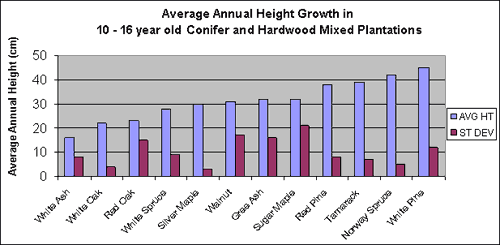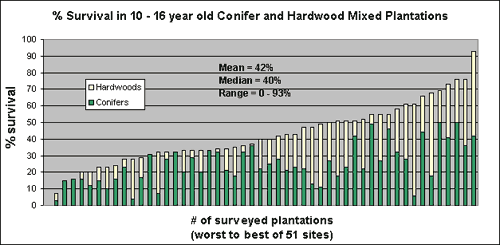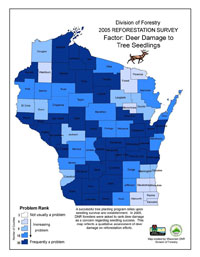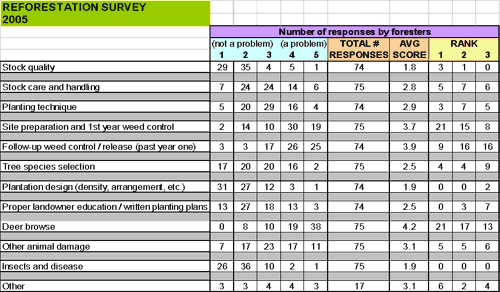Wisconsin Deer Population
Whitetail deer are abundant in Wisconsin. In 2000, Wisconsin set a national record for number of deer harvested, and has been the top deer harvest producing state over the past decade. For late-summer 2006, the whitetail deer population is estimated at 1.5 to 1.7 million animals. In most regions and management units, the deer herd remains well above population management goals.
Deer Herbivory and Forest Regeneration
Below is a 2016 presentation to the Council regarding deer impacts to forest regeneration and data to assess and monitor the impacts. The presentation includes information on County Deer Advisory Councils.
Deer Herbivory and Forest Regeneration Presentation Slides
Exclosures
Exclosures have been erected by many individuals as part of formal studies and as demonstrations. Deer exclosures have been used to demonstrate browsing impacts in the Lake States since at least the 1950's. Exclosures consistently demonstrate the impacts of herbivory on plant composition and growth.
2006 Plantation (Artificial Regeneration) Assessment
In 2006, an assessment was made of 51 mixed hardwood-conifer CRP plantations. Plantations assessed were 10-16 years old and located in eight counties. In many plantations, deer browse has significantly impacted the growth and survival of hardwood seedlings. Preferential browsing of hardwoods has resulted in many plantations being dominated by conifers and overall stocking tends to be low.
Following are preliminary graphs demonstrating preferential browsing and problems with achieving successful hardwood regeneration in plantations.
- Recent deer browse damage was frequently observed on young hardwoods, especially red oak. However, these trees were already 10-16 years old; it is likely that significantly more browse damage and seedling mortality occurred in these plantations at younger ages. Early seedling damage and specific causes of mortality were difficult to assess.
- Preferential browsing frequently results in retarded hardwood growth and often enables conifers to assert dominance in mixed plantings.
- Preferential and sustained browsing of hardwoods can contribute to seedling mortality. In mixed plantings, this often results in conifer dominance and understocked plantations.
While reflecting the highly variable nature of deer impacts across landscapes, the graphs also clearly demonstrate widespread, significant impacts of deer on new plantations.



2006 Natural Oak Regeneration Survey
In a 2006 natural oak regeneration survey of foresters (61 respondents, 87% were DNR Foresters), a broad array of questions regarding oak regeneration were asked. Only one question addressed deer: "If the desired stocking of established natural oak regeneration was not achieved, what factors do you think contributed to the failure?" Respondents were asked to evaluate eight different factors and to rank each from 1, "little or no contribution," to 5, "very strong contribution."
Of the eight factors, more respondents identified deer as a strong to very strong contributor to oak regeneration failure than any other factor. Of those who responded to this question (50 foresters), 80% identified deer as a strong to very strong contributor to regeneration failures.
2005 Reforestation (Artificial Regeneration) Survey
In a 2005 reforestation survey of DNR foresters, deer browse was identified as the most significant barrier to successful forest regeneration; 81% of respondents identified deer browse as a problem.

Deer Damage to Tree Seedlings

Forester survey